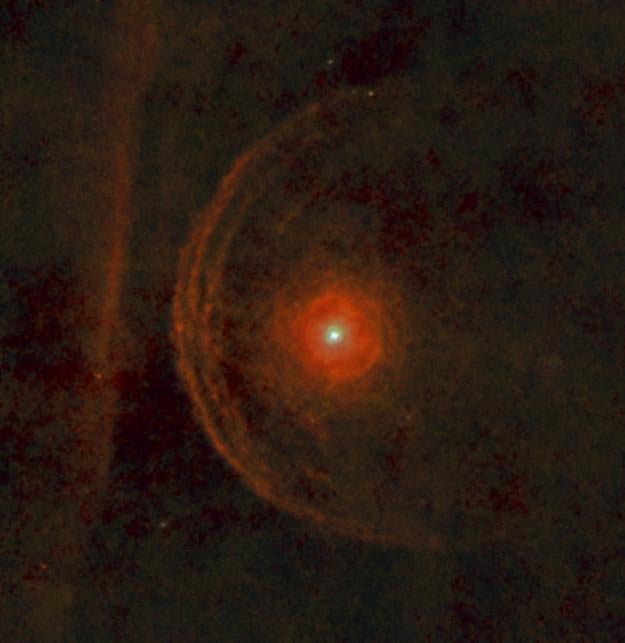The Independent's journalism is supported by our readers. When you purchase through links on our site, we may earn commission.
An accidental space telescope discovered why giant star Betelgeuse grew dim
A satellite normally used to study weather on Earth just gave astronomers new insights into the dimming of the great red supergiant star Betelgeuse

In late 2019, the red supergiant star Betelgeuse in the constellation Orion dimmed dramatically, leading astronomers to wonder if the massive star was about to explode in a supernova.
But Betelgeuse hasn’t exploded yet, although scientists still consider it likely to do so sometime in the next 100,000 years, and so two theories have been proposed to explain the “great dimming”. The first is a decrease in the star’s temperature, and the other an expulsion of stellar dust by the star that occluded astronomers’ view.
In a new paper in the journal Nature Astronomy, however, scientists from the University of Tokyo argue that a combination of both decreasing temperature and stellar dust are responsible for the dimming of Betelgeuse. A conclusion they reached about a distant star using a tool that is usually focused exclusively on Earth.
The Japanese Himawari-8 geostationary weather satellite has a demanding day job: It’s taken an image of the entire disk of Earth as visible from its perch 35,786 kilometers above the East coast of Japan every 10 minutes since July 2015.
But those images, taken in the visible and infrared spectrum of light, also captures a lot of space around Earth’s edges during each scan of the planet. That space included a view of Betelgeuse, and the researchers realised they had 4.5 years worth of frequent imagery of the red supergiant star.
The most advanced astronomical telescopes peered at Betelgeuse as it dimmed, but it turns out there are advantages to using a weather satellite for distant astronomical observations. Ground-based telescopes are blind or hindered certain infrared wavelengths where the contents of Earth’s atmosphere — such as water vapor — absorb light, the study authors note; Himawari-8 could watch Betelgeuse unfiltered.
Space-based telescopes like the Hubble or James Webb telescopes can also observe distant stars without worrying about atmospheric interference, but are in high demand for many observations and “require higher costs than ground-based telescopes,” the researchers wrote in the paper. “Survey telescopes orbiting the Earth for non-astronomical purposes—such as the Himawari-8 meteorological satellite—have the potential to overcome these problems.”
With steady observations of Betelgeuse in hand, the researchers conclude that a decrease in the star’s temperature and stellar dust belched out by the star contributed equally to the dimming first observed in 2019.
The researchers also noted a sudden shift in the way the dust occluding Betelgeuse behaved in April 2019, with portions of the dust containing water vapor shifting from absorbing infrared light to emitting to. This could be the result of a shock originating deeper inside Betelgeuse and working its way outward to perturb the stardust, the researchers note, and “this shock might be related to the triggering process of the Great Dimming.”
As a red supergiant, Betelgeuse is more than 800 times the size of our Sun, and 10 to 20 times our Sun’s mass. It long ago fused all its hydrogen into helium, the nuclear fusion reaction that powers younger stars like our Sun, and has since been fusing helium into heavier elements.
Eventually, Betelgeuse’s core will become mostly iron, and its thermonuclear fires will wane, leading the massive star to collapse in on itself. The collapse will trigger a rebound explosion — a supernova — and likely leave a small, incredibly dense, neutron star to mark the grave of the once giant Betelgeuse.
Join our commenting forum
Join thought-provoking conversations, follow other Independent readers and see their replies
Comments
Bookmark popover
Removed from bookmarks